Refund Guaranteed
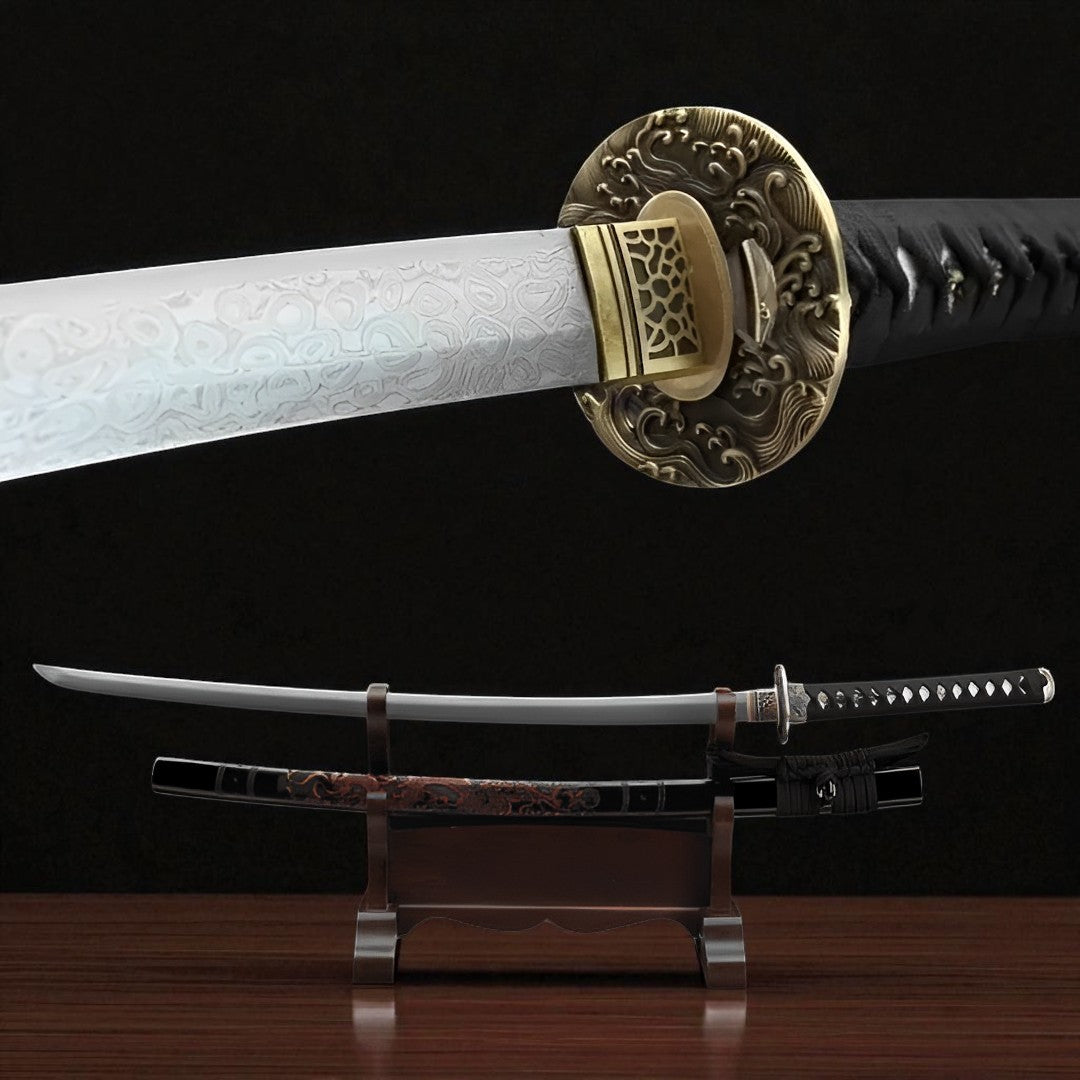
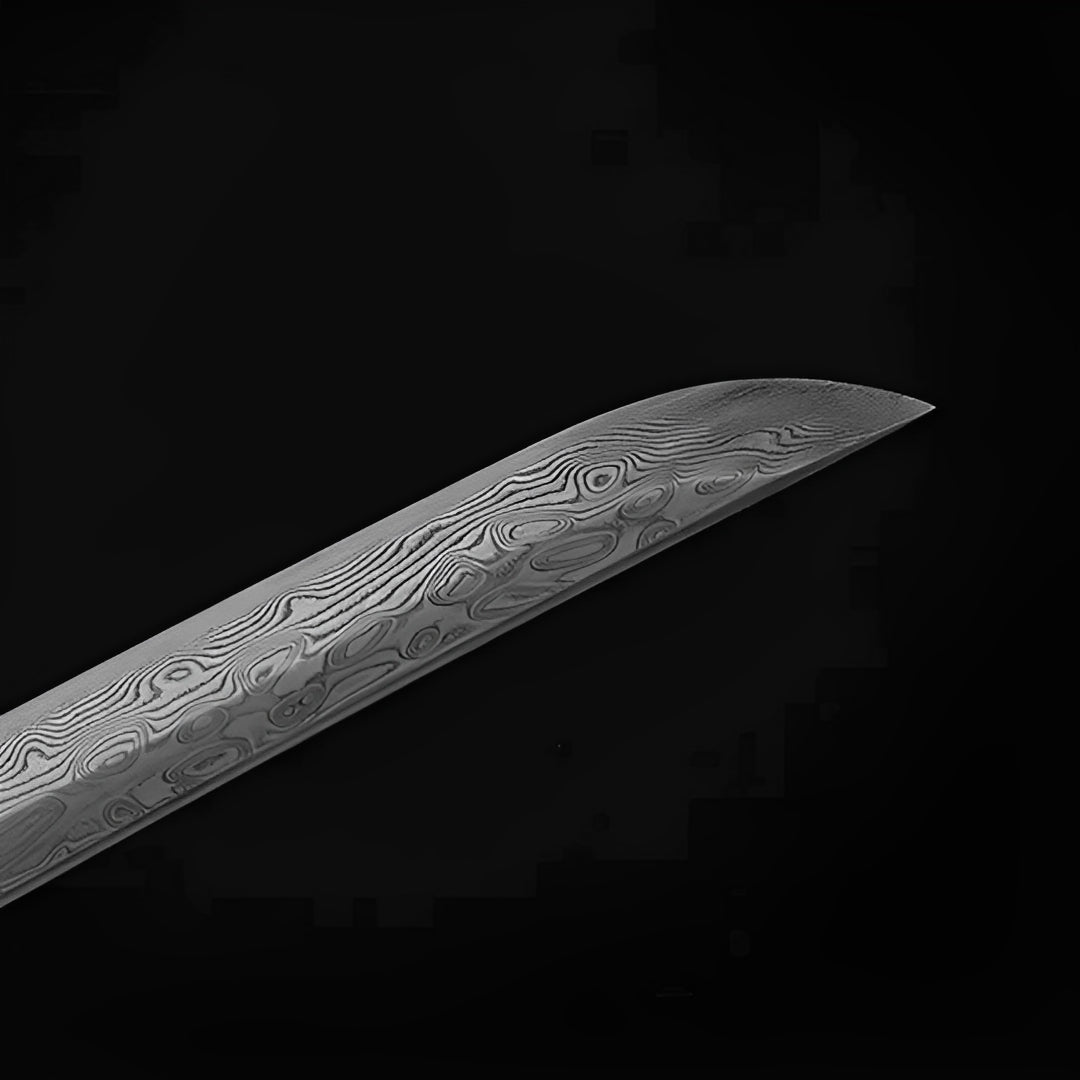
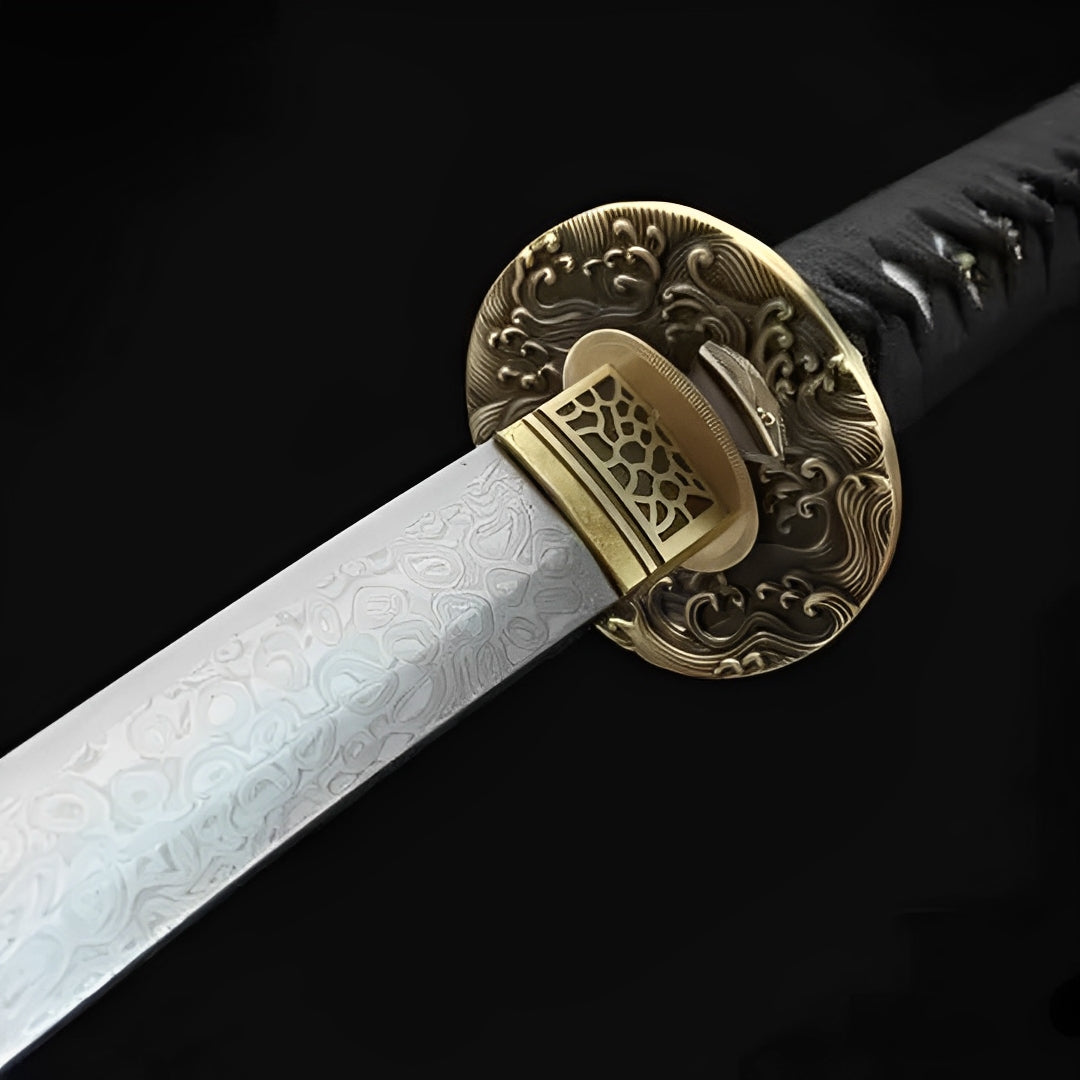
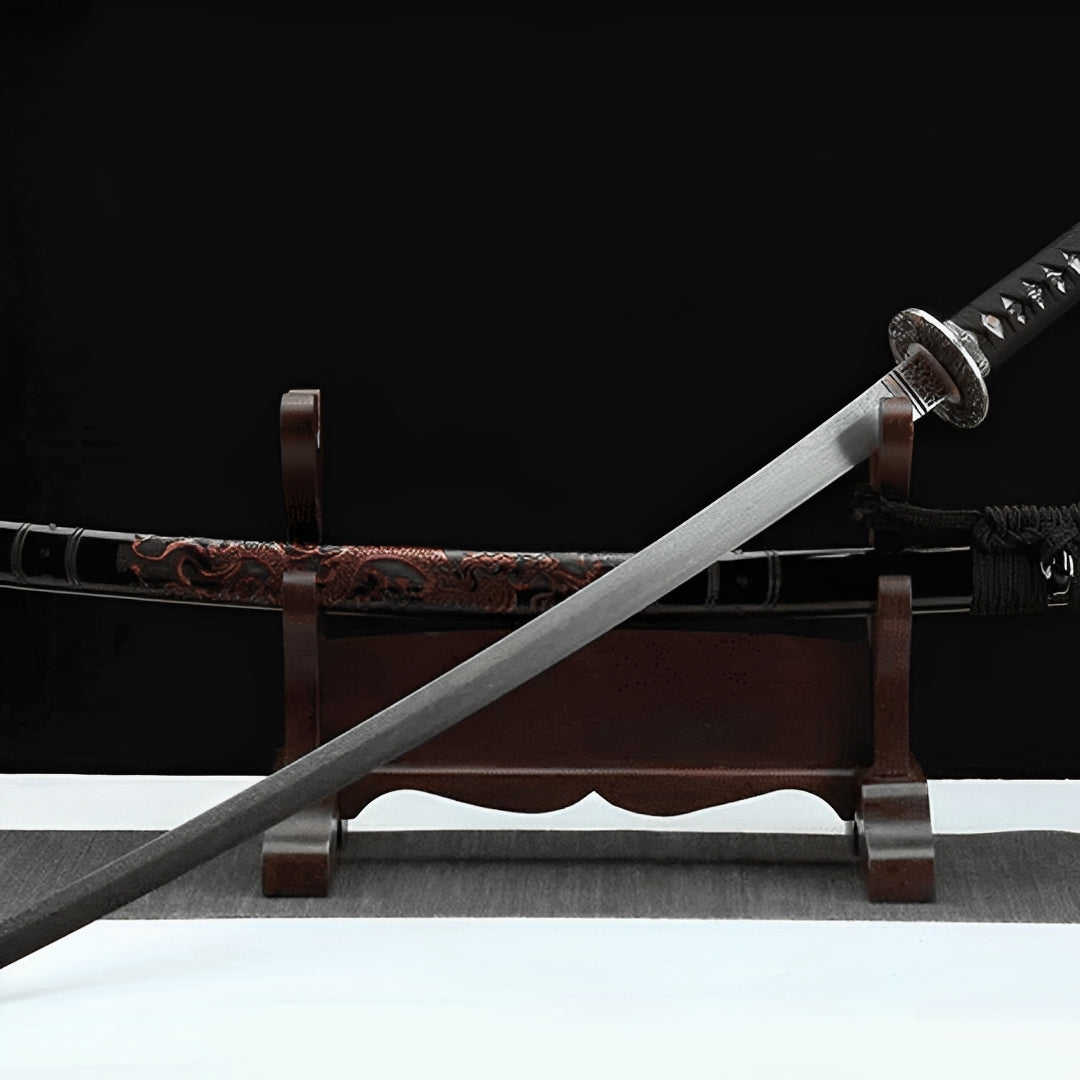
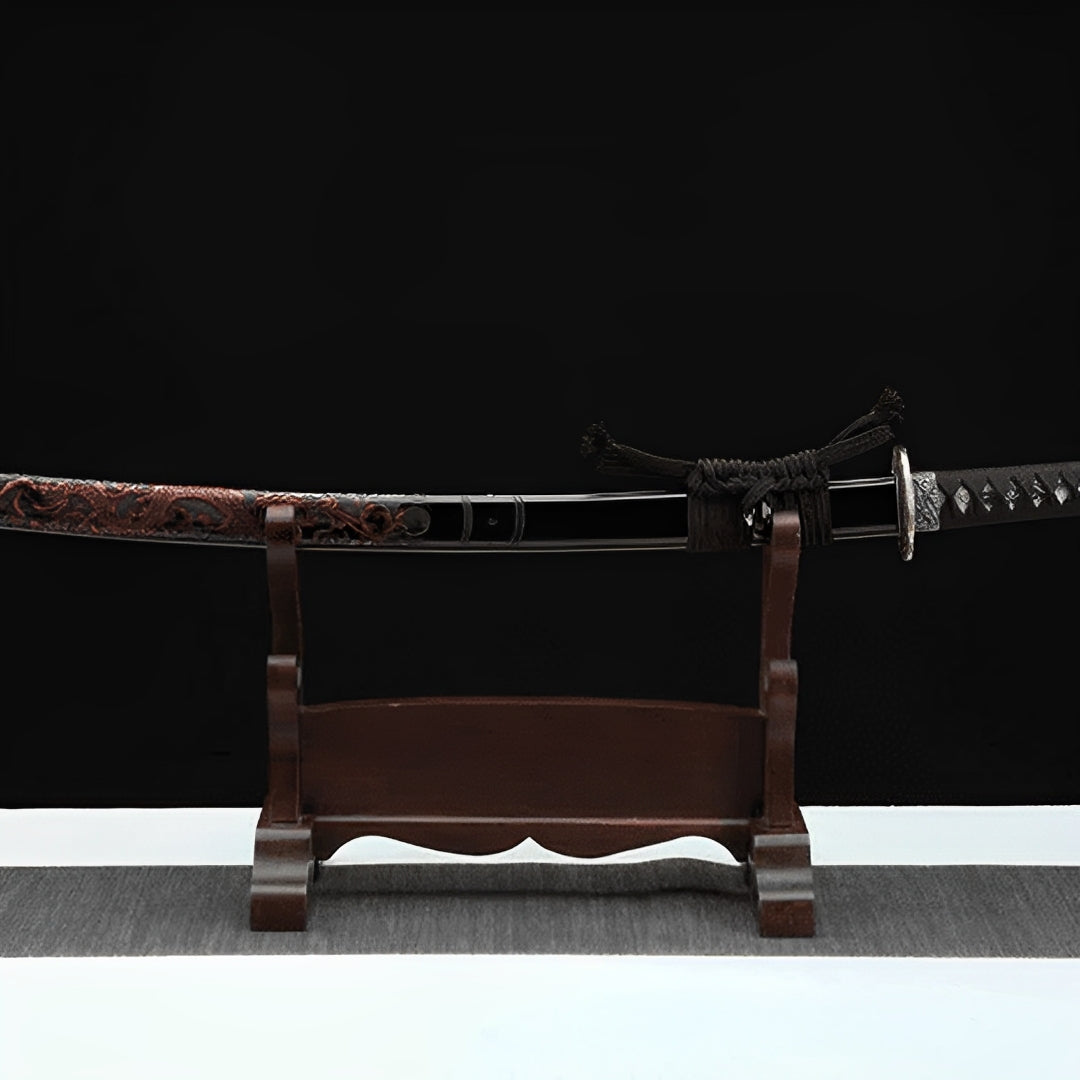
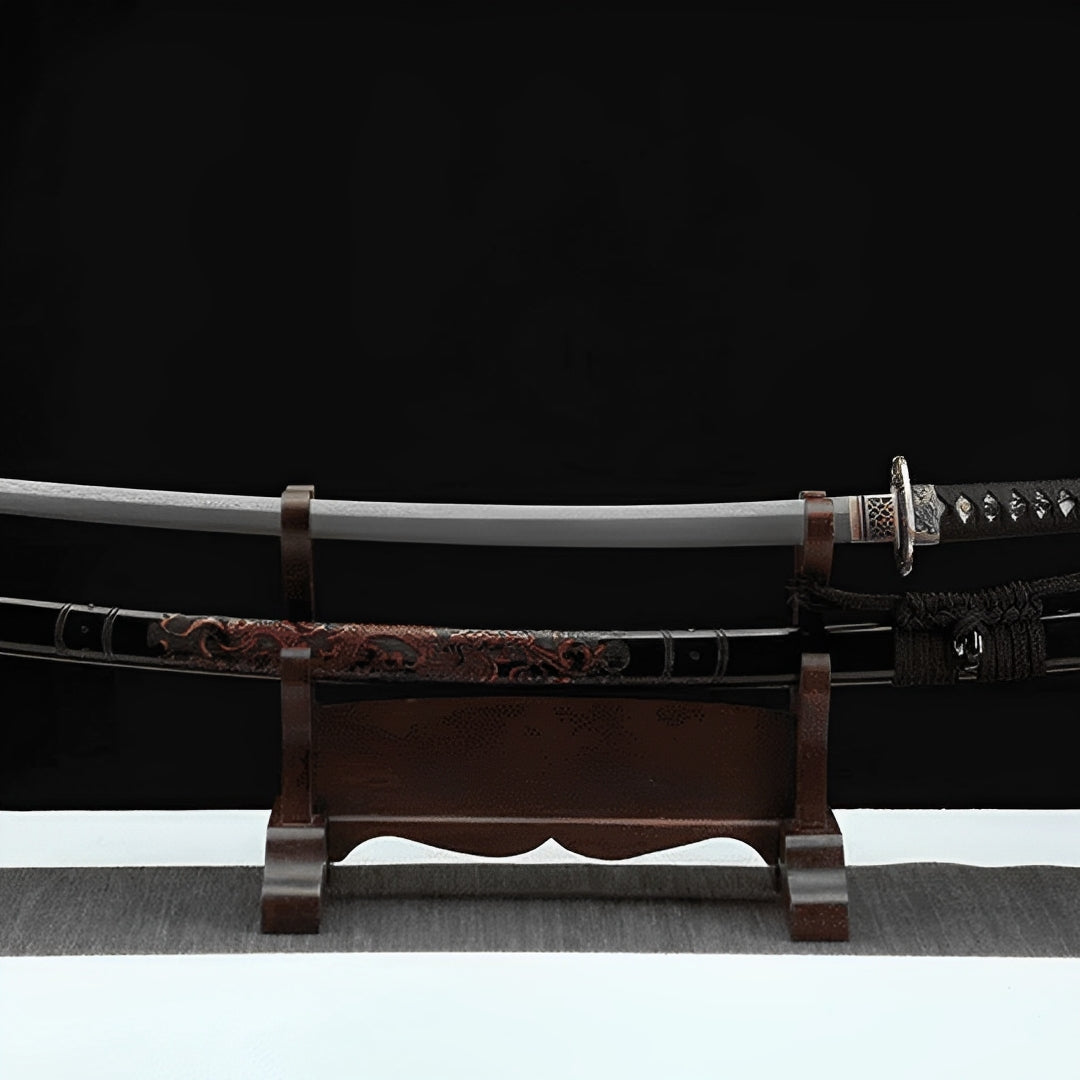
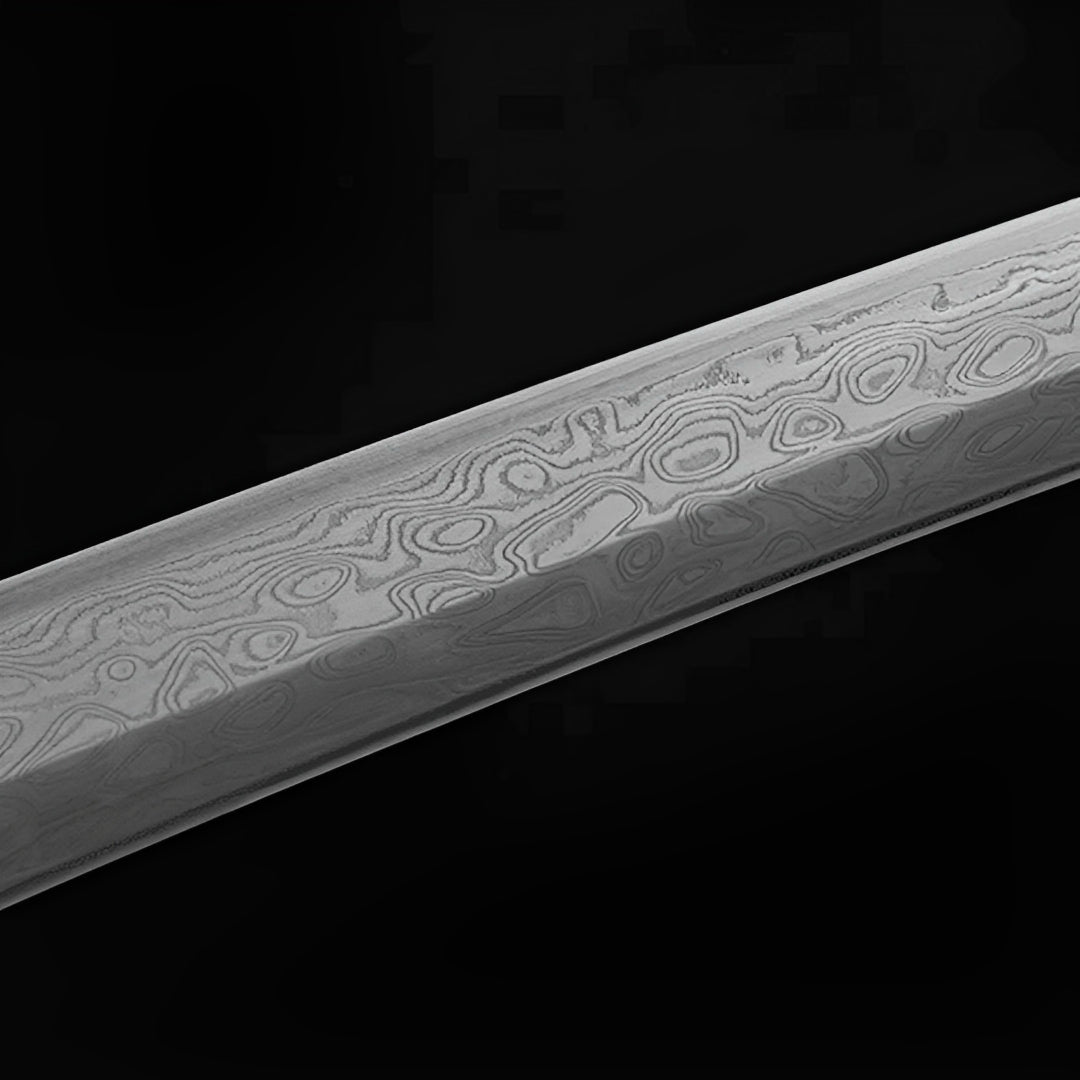
Why choose us
Ships within 48/72h
Forged Blade
Collector Quality
Trusted Globally
Inspired by Japan
Yugure Katana (Damascus Steel) - 夕暮
Popular upgrades
Free Shipping over $250
No Bots, No AI
Refund Guaranteed
Free Shipping over $250
No Bots, No AI
Our team is here to help with any questions or concerns.
We’re always happy to assist you — don’t hesitate to reach out.
Why choose us
Ships within 48/72h
Forged Blade
Collector Quality
Trusted Globally
Inspired by Japan

Yugure Katana (Damascus Steel) - 夕暮
Specifications
- Full tang in the handle
- SHARP blade
- Hand-forged
- Blade material: Damascus steel
- Habaki material: Finely carved brass
- Genuine ray skin on the handle
- Hand-painted, lacquered solid wood saya
- Finely carved copper tsuba
- Tsuka-ITO made of cotton
- Gold-plated menuki
- Total length: 105 cm
- Blade length: 72 cm
- Blade width: 3.2 cm
- Blade thickness: 0.7 cm
- Handle length: 30 cm
-
Included: Katana and its scabbard
Yugure Katana - Twilight Transition Liminal Grace
Navigate thresholds with Yugure Katana, blade honoring day's gentle surrender. This transitional twilight harmony weapon refuses binary thinking - pale saya suggesting sky between day's blue and night's black, damascus layers flowing like sunset's gradual color shift defying single categorization, golden flora celebrating life persisting through daily dying, the entire piece embodying yugure (夕暮れ twilight/dusk) philosophy that greatest wisdom recognizes liminal spaces between extremes where magic happens, transformations occur, possibilities expand beyond what daylight's clarity or darkness's mystery alone could offer, asking whether you'll force everything into clear categories or embrace thresholds where definitions blur enabling seeing what rigid classification conceals.
Liminal Twilight Philosophy
Yugure (夕暮れ - evening/dusk/twilight) represents specific temporal threshold - neither day (昼 hiru) nor night (夜 yoru) but transitional moment between, the liminal time when boundaries soften, when categorical certainty yields to ambiguous possibility, when definitions blur creating space for transformation impossible in daylight's harsh clarity or night's absolute darkness. This threshold wisdom blade channels understanding that most significant changes happen at boundaries rather than within stable states, that dawn and dusk prove more transformative than noon or midnight, that transitions contain potentials stable conditions lack precisely through their in-between nature refusing comfortable categorization.
Traditional Japanese culture specifically celebrated twilight through multiple aesthetic concepts - tasogare (黄昏 "who is that?" - the moment when light fades enough that recognizing approaching figures becomes difficult), yūyake (夕焼け evening glow), the magical hour when ghosts appear because boundaries between living and dead soften just as boundaries between day and night dissolve, the liminal time enabling crossing thresholds that daylight or full darkness maintains as impassable barriers. The boundary crossing weapon honors that tradition where twilight's ambiguity enables what binary clarity prevents, where neither-nor creates opportunities both-and thinking cannot access.
Buddhist philosophy specifically explored bardo (中有 chūu in Japanese) - intermediate states between stable conditions where transformation occurs, the recognition that birth and death represent merely most dramatic examples of constant transitioning everything undergoes continuously, that holding to fixed states creates suffering because reality consists of perpetual becoming rather than static being, twilight becoming perfect metaphor for existence itself: always transitioning, never fully one thing or another, the apparent stability of "day" or "night" being conceptual impositions on continuous change.
Contemporary psychology validates through research on liminal spaces - physical thresholds (doorways, stairs), temporal transitions (between jobs, relationships, life stages), psychological boundaries (between consciousness states), all proving sites where creativity, insight, transformation concentrate because rigid categories loosen enabling novel combinations, where neither-one-nor-other creates freedom from both options' constraints, twilight's ambiguity modeling psychological spaces where greatest growth often occurs.
Philosophical collectors specifically appreciate pieces embodying complex concepts about boundaries, transitions, the spaces between categories where magic happens, recognizing that forcing everything into binary either-or often misses richer both-and possibilities, that twilight teaching involves embracing ambiguity rather than rushing toward categorical clarity, that wisdom sometimes means dwelling in thresholds rather than hastening toward stability eliminating transition's creative potential.
Subtle Engraving Restraint
The pale saya features delicate engraving barely visible - not bold carved patterns dominating surface but whisper-soft designs requiring close examination discovering, the restraint creating sophisticated aesthetic where decoration serves those who look carefully while remaining invisible to casual observers, the subtlety teaching that sometimes greatest beauty speaks quietly to those willing listening rather than shouting for attention from everyone passing. This whisper aesthetic blade embodies principle that sophistication often involves what you choose not emphasizing rather than what you pile on, that confident design lets quality materials speak through minimal intervention rather than burying them beneath excessive decoration compensating for mediocrity.
Traditional Japanese aesthetics specifically valued shibui (渋い) - subtle, unobtrusive beauty requiring cultivated taste appreciating, the sophisticated restraint distinguishing mature aesthetic from youthful enthusiasm preferring obvious dramatic effects, the cultural recognition that flashiness often signals insecurity while quiet confidence requires no amplification because quality announces itself to those capable recognizing it. The cultivated taste scabbard rewards education and attention, filtering audience into those whose refined sensibilities notice subtlety versus those requiring bold statements because lacking discernment appreciating nuance.
The specific choice placing delicate engraving on white saya creates technical challenge - the pale background shows every imperfection mercilessly, the subtlety requiring absolute precision because errors cannot hide behind bold decoration distracting from flaws, the difficulty proving craftsman's confidence through choosing showcase technique demanding perfection rather than selecting methods permitting mistakes' concealment. The technical confidence blade demonstrates that restraint often proves harder than excess, that doing less better requires greater skill than doing more adequately.
Contemporary minimalism often misunderstands restraint as mere absence - "less is more" becoming excuse for lazy simplicity rather than refined sophistication, the difference being that true minimalism eliminates everything except what matters absolutely while lazy simplicity just does less without thoughtful consideration about what survives editing. The subtle engraving proves this blade belongs to former category - the decoration exists deliberately serving specific aesthetic purpose, just delivered with restraint that confident design enables.
Golden Nature Abundance
The elaborately decorated golden tsuba features relief-worked floral and nature motifs - possibly chrysanthemums (imperial flower), possibly plum blossoms (early spring symbol), possibly leaves and vines, the abundant organic forms creating lush composition celebrating natural world's generative abundance, life's persistent creativity, the golden color specifically suggesting sunset's warm glow illuminating nature one final time before darkness arrives. This abundant life guard contrasts against saya's restraint, proving that sophistication accommodates both minimalism and elaboration when each serves appropriate purpose in unified design, that knowing when to speak loudly versus whisper proves more important than always choosing one approach exclusively.
Traditional Japanese metalworking specifically elevated nature motifs through detailed observation - craftsmen studying actual plants understanding growth patterns, seasonal changes, the knowledge enabling representations that felt alive rather than merely decorative, the naturalism creating connection to actual natural world rather than generic "pretty flowers" lacking botanical accuracy. The naturalist art guard demonstrates that decoration serving education and connection proves more valuable than mere prettiness, that learning about nature through studying tsuba's accurate flora representations adds dimension beyond aesthetic appreciation.
The golden color specifically suggests ripeness, harvest, the abundance day's labor accumulated, twilight representing moment pausing to appreciate what today achieved before night arrives bringing rest and tomorrow requiring starting over. That seasonal agricultural metaphor applies beyond farming - every day we accumulate efforts, experiences, learning, twilight providing moment acknowledging accomplishments before sleep erases conscious memory, the golden abundance celebrating productivity rather than regretting day's ending.
The contrast between subtle white saya and ornate golden guard creates visual rhythm - calm then excitement, whisper then emphasis, the alternation preventing either monotony (all-subtle becomes boring) or exhaustion (all-ornate becomes overwhelming), the balanced composition modeling how life requires varying intensities, how constant anything becomes tedious whether peaceful or exciting, how skillfully orchestrated variation maintains interest across time.
Damascus Twilight Gradient
The damascus steel patterns specifically suggesting twilight's gradual color transition creates perfect visual metaphor - the layered steel's flowing lines mimic how sunset doesn't switch instantly from day to night but transforms gradually through spectrum from blue to purple to orange to pink to darkness, the metallurgical layering enabling gradient impossible for single-alloy steel achieving, the material properties serving narrative purpose depicting temporal phenomenon through spatial medium. This temporal gradient steel blade achieves synthesis where engineering constraints become artistic opportunities, where damascus's technical requirements generate aesthetic communicating specific concept rather than generic "damascus looks cool" reasoning.
Unlike previous damascus focusing on dragon wings (#46), earth strata (#45), ocean waves (#32), devotional layers (#43), this damascus specifically represents TWILIGHT'S COLOR GRADIENT - the smooth transition between extremes, the graduated change resisting categorization, the flow from light to dark teaching about how transformation happens gradually rather than instantaneously, how categories that seem distinct (day/night) actually exist on continuum where boundaries blur under examination.
Traditional Japanese color aesthetics specifically studied twilight's changing palette - poets naming specific hues appearing only during that transition, painters developing techniques depicting light's transformation, the cultural attention to color's temporal dimension reflecting sophisticated understanding that same physical location looks different across day's progression, that color proves relative rather than absolute, twilight specifically demonstrating how perception shifts when lighting changes revealing or concealing details stable illumination maintains consistently visible.
The specific flow pattern visible in damascus creates organic movement - not geometric regularity but natural variation suggesting clouds catching sunset's last light, the unpredictability modeling how each evening brings unique display, how no two twilights prove identical despite sharing transitional timing, the individuality teaching that transitions follow general patterns yet manifest uniquely each instance.
Transitional Collector Journey
This threshold wisdom piece serves collectors navigating transitions - between novice and expert, between accumulation and curation, between enthusiasm and sophistication, between quantity and quality, the personal development paralleling twilight's transformation where neither-beginning-nor-end creates space for becoming something new, where releasing what was enables embracing what will be, where dwelling in transition proves necessary before arriving at destination. The yugure philosophy applies: rushing through transitions toward categorical stability often prevents transformations twilight's ambiguity enables.
Traditional Japanese aesthetics specifically celebrated moments of change - cherry blossoms at peak (between bud and scatter), autumn leaves turning (between green and fallen), twilight itself (between day and night), the cultural valuing of transitional states recognizing that change concentrated in thresholds carries beauty and meaning stable states lack through their very stability preventing dramatic transformation's visibility. The change celebration blade embodies that appreciation where transition proves worth honoring rather than enduring, where threshold deserves dwelling rather than rushing.
Museum contexts specifically welcome pieces teaching about liminal concepts - the twilight blade enabling discussions about how different cultures conceptualize boundaries, transitions, the spaces between categories, the visual metaphor providing accessible entry into complex anthropological and philosophical topics about binary thinking versus continuous spectra, about how language creates categories that nature's gradients challenge.
Contemporary relevance includes people navigating life transitions - career changes, relationship evolution, personal growth, any situation where they exist between stable states wondering who they're becoming, the twilight blade offering metaphor where transformation's discomfort proves necessary rather than problematic, where ambiguity creates possibility, where rushing toward new stability prevents fully experiencing transition's creative potential.
The liminal wisdom sword particularly appeals to collectors who've learned that between-stages often matter more than stages themselves, that weddings celebrate transitions not marriages, that graduations honor thresholds not degrees, that most memorable moments involve changes not stability, that twilight's magic comes precisely through its refusal being day or night, its embrace of both-and defying either-or, its teaching that sometimes greatest wisdom involves dwelling in thresholds rather than hastening toward categorical certainty eliminating ambiguity's creative possibilities.
Care Instructions: Maintain this twilight threshold blade understanding transitions require patient attention. The subtle white saya engravings demand gentle cleaning revealing rather than obscuring delicate work - use soft cloths highlighting patterns through creating slight sheen differential between engraved and unengraved areas. The golden floral guard needs careful attention preserving relief details - avoid aggressive polishing that would flatten dimensional elements, the patient maintenance paralleling how transitions require time's passage rather than forcing premature resolution. The damascus patterns benefit from lighting revealing gradient flow - angle blade catching light showing how layers create continuous transformation rather than discrete boundaries. Handle knowing this embodies teaching about liminal spaces, about dwelling in transitions rather than rushing through them, about how twilight's ambiguity enables transformations daylight's clarity or night's darkness cannot achieve through their categorical certainty. Display where it prompts reflection about your own transitions - which thresholds are you crossing? What changes are you undergoing? How might dwelling in ambiguity serve growth that premature certainty would prevent? Consider this blade teaching that twilight lasts mere minutes yet contains magic hours cannot match, that concentrated transformation happens at boundaries, that neither-day-nor-night creates possibilities both-day-and-night thinking cannot access, that sometimes wisdom involves resisting categorical clarity and embracing thresholds' creative ambiguity, the subtle engraving teaching that greatest beauty often whispers while the ornate guard proves sophistication accommodates both restraint and abundance when each serves appropriate purpose, the damascus gradient reminding that transformation happens gradually through continuous becoming rather than instant categorical shifts, the yugure philosophy revealing that life itself proves perpetual twilight—always transitioning, never fully one thing or another, the apparent stability we cling to being conceptual imposition on reality's continuous flow, the sword teaching through its existence what twilight teaches through its appearance: embrace thresholds, dwell in transitions, find magic in boundaries where categories dissolve and possibilities expand beyond what either extreme alone could offer.
Day yields. Night arrives. Twilight dwells between. Neither-nor becomes both-and. Thresholds teach: transformation happens at boundaries.
Legal Disclaimer
By purchasing from Katana Corp, you acknowledge and agree that:
- You are at least 18 years of age (or the age of majority in your jurisdiction).
- You are solely responsible for verifying and complying with all local laws and import regulations before placing an order.
- Some countries prohibit the importation of swords entirely. Katana Corp is not responsible for orders delayed, seized, or refused by customs authorities.
- All katanas and related products are sold strictly as decorative and display items. They are not intended or certified for combat use.
- Depending on the jurisdiction, swords may legally be considered bladed weapons, subject to specific restrictions or prohibitions.
- Katana Corp disclaims all liability for any injury, damage, or legal consequences resulting from misuse, abuse, or unlawful use of its products.
For full details, please refer to our Terms of Service.
Care & Maintenance
To maintain your katana's appearance and performance over time, we recommend:
- Regularly wiping the blade with a soft cloth to remove fingerprints and moisture.
- Applying a light coat of choji oil to prevent rust (for carbon steel blades).
- Storing the sword in a dry place, preferably inside its saya.
- Avoiding direct contact with hard surfaces to preserve sharpness and finish.
For more care tips, check our full maintenance guide in the FAQ section.
Behind the Blade
Every katana we offer carries the essence of centuries-old craftsmanship.
More than just a weapon, the katana symbolizes discipline, honor, and mastery.
Our artisans draw inspiration from traditional forging methods to ensure each blade reflects the spirit of the samurai — strength, precision, and soul.
Owning one is not just about aesthetics — it’s about carrying a piece of that legacy.
User Experience
This katana is designed to offer a perfect balance between blade and handle.
Its ergonomic tsuka (handle) allows a secure two-handed grip, while the weight distribution ensures smooth, fluid movement.
Whether for training, display or cutting practice, handling feels natural and precise.
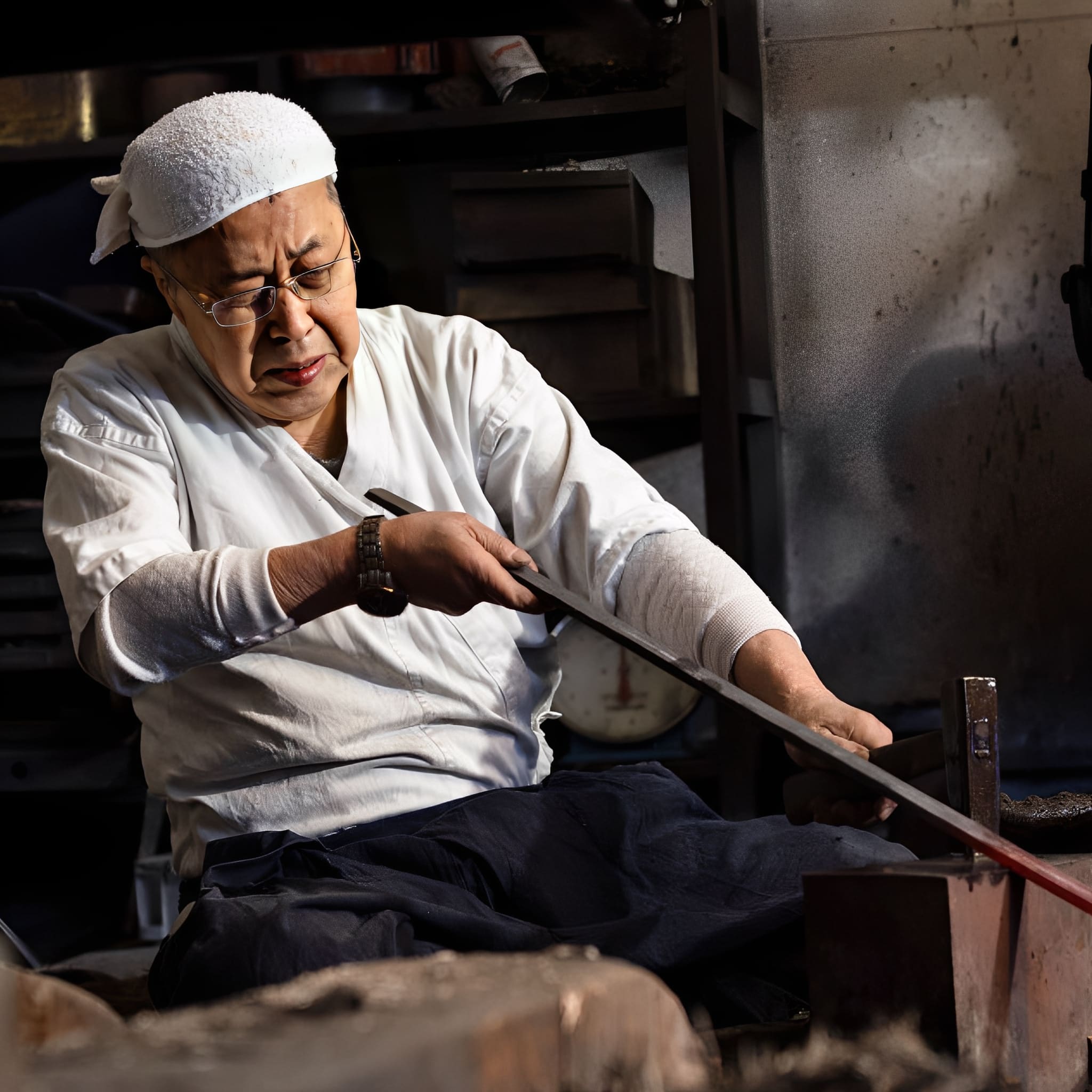
The Art of Traditional Forging
Each katana we craft is born from centuries of samurai tradition.
Our master smiths shape every blade by hand, folding the steel to achieve unmatched strength, flexibility, and beauty.
This time-honored process is not just about creating a weapon? it’s about preserving a legacy of discipline, honor, and artistry.
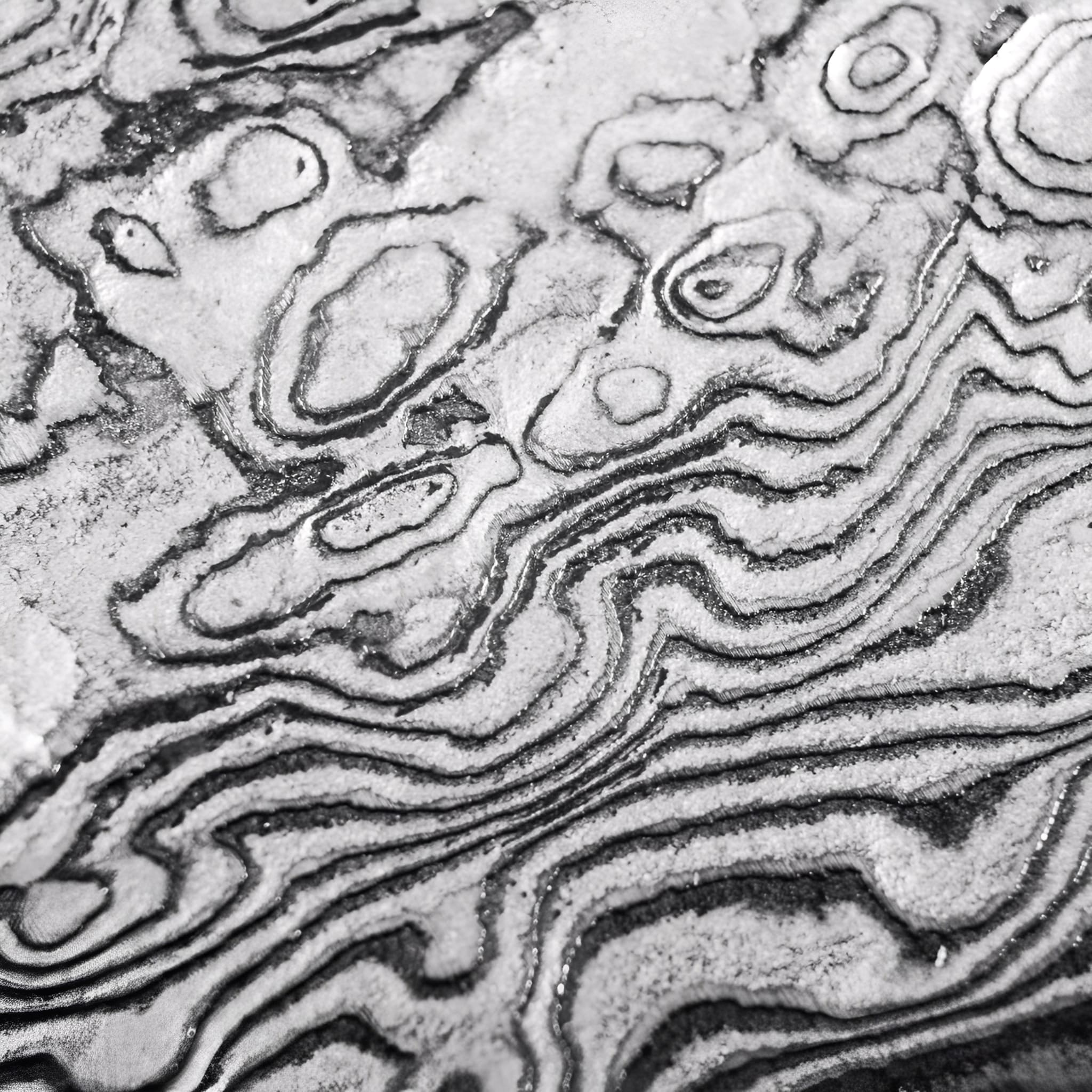
Materials Chosen Without Compromise
We select only the highest-grade steels and authentic fittings to ensure every katana is both a masterpiece and a reliable companion.
From the flawless hamon line to the perfectly balanced tang, each detail is carefully inspected to meet the highest standards of performance and aesthetics.
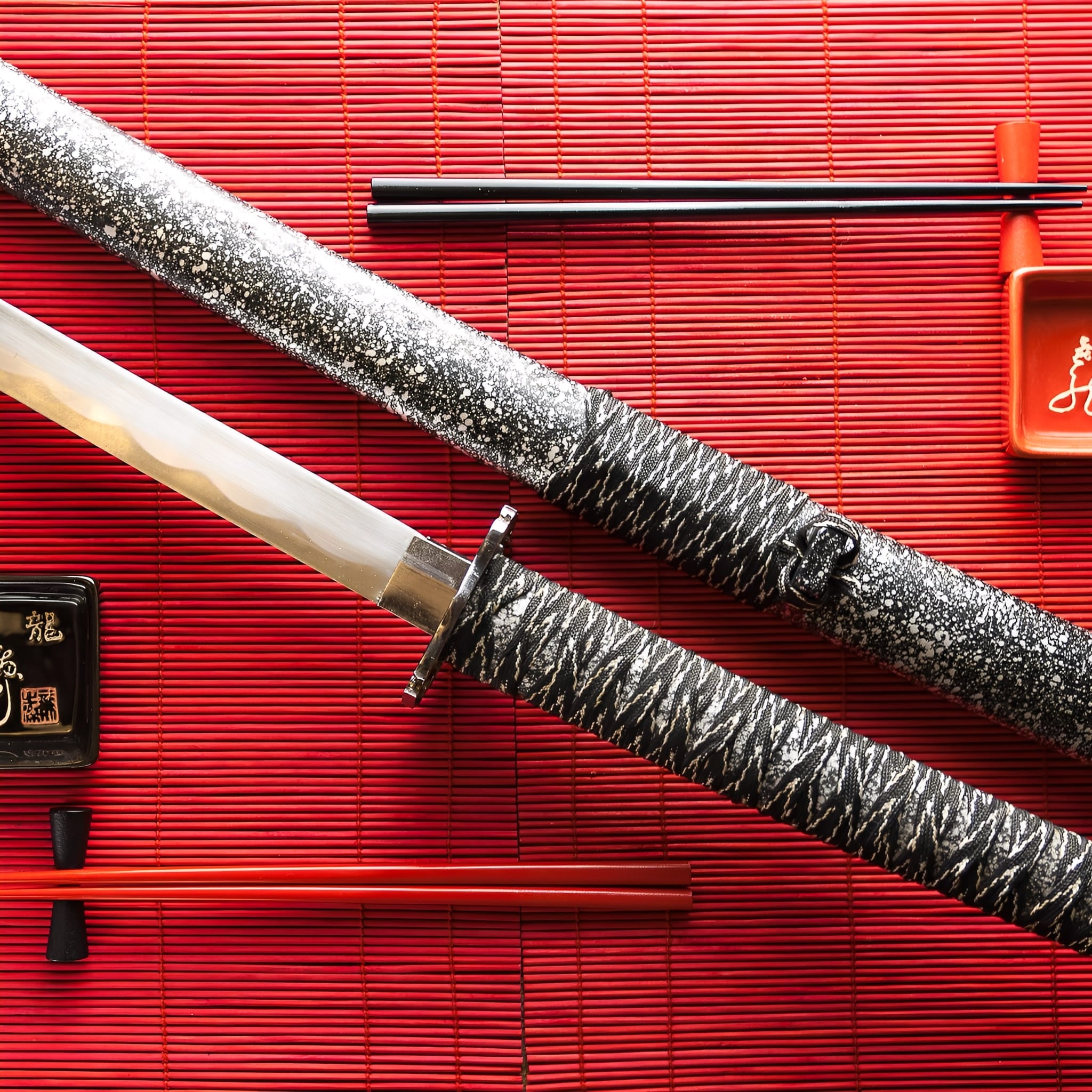
More Than a Sword, A Lifelong Legacy
Owning a handmade katana is an experience that goes beyond the blade itself. It’s holding history, tradition, and craftsmanship in your hands.
Whether displayed as a work of art or wielded with precision, your katana will stand as a symbol of timeless skill and dedication for generations to come.
-
Key Destinations
United States: 5–7 days
Canada: 5–7 days
Australia: 6–9 days
Denmark: 4–6 days
Netherlands: 3–5 days
Sweden: 4–6 days
Switzerland: 3–5 days
Finland: 5–7 days
Singapore: 6–8 days -
Central European Partners
France: 2–3 days
Germany: 3–5 days
Spain: 4–6 days
Italy: 4–6 days
Belgium: 3–5 days
Austria: 4–6 days
Ireland: 4–6 days
Poland: 4–6 days
Portugal: 4–6 days -
Extended EU Network
Czechia: 4–6 days
Hungary: 4–6 days
Slovakia: 4–6 days
Slovenia: 5–7 days
Romania: 5–7 days
Bulgaria: 5–7 days
Croatia: 5–7 days
Serbia: 5–7 days
Estonia: 5–7 days
Latvia: 5–7 days
Lithuania: 5–7 days
Luxembourg: 3–5 days
Greece: 5–8 days -
FAQ’s
Visit our FAQs page to find answers to common questions.